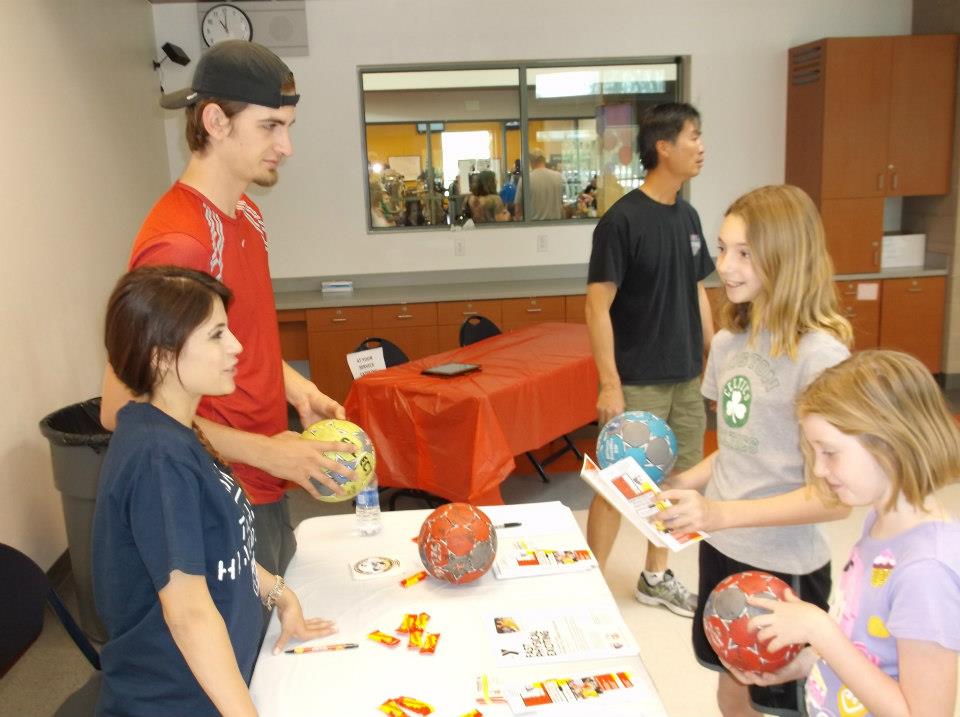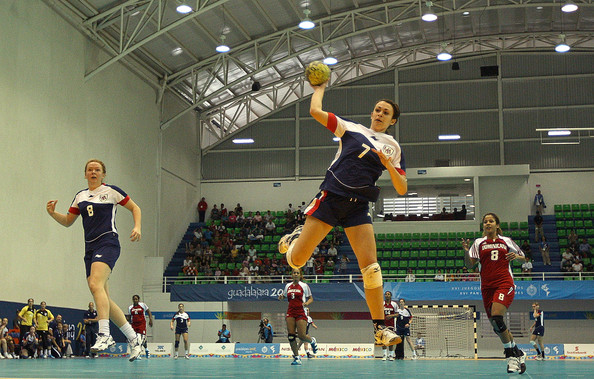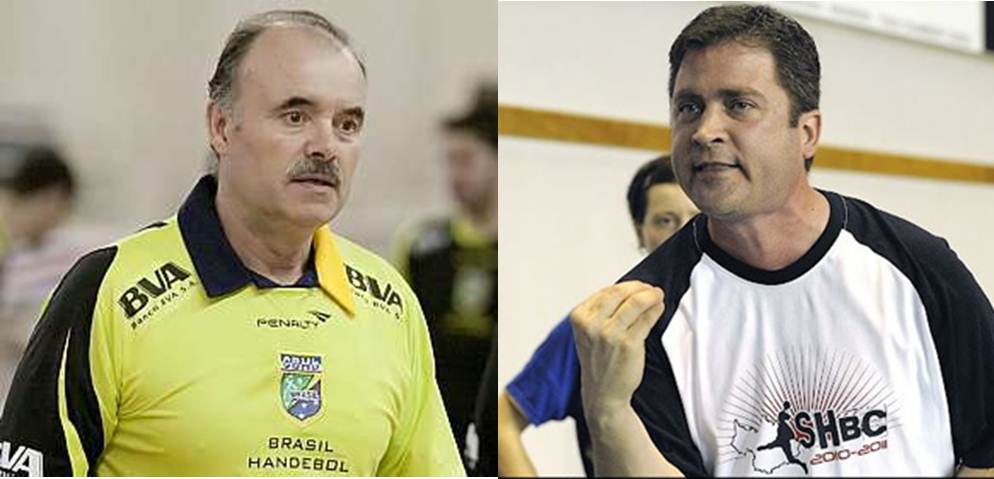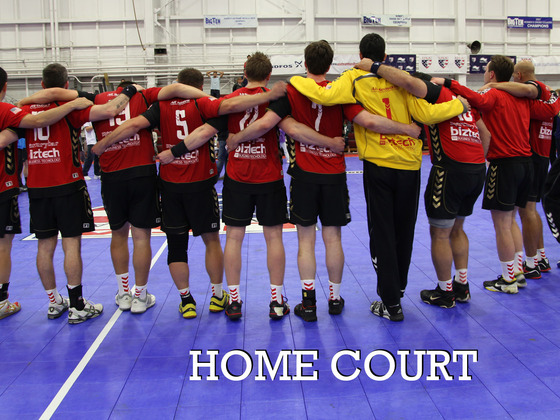
My daughters discussing Team Handball with the Scorpions at the Las Vegas YMCA Youth Day. Are they now future Colorado Dynamo stars?
All my bags are packed; I’m ready to go…. Rocky Mountain High, Colorado…. I guess I’ve got old John Denver songs on the brain and for good reason, as the Ryan Family is all packed up and ready for our move to Colorado. Six years ago when we left Paris for Las Vegas, I reflected on what a tremendous opportunity I had had to live in a foreign country, to play handball and learn more about the sport. I also waxed a bit about my pending move to a handball desert where to the best of my knowledge the sport had never even been played. With a bit of pride I can claim some credit for changing that and helping to start a new club, the Las Vegas Scorpions. As I head out of town I’m reflecting a bit on club development in the U.S. Why, it’s so important and why it’s so challenging.
Why club programs are so important to developing the sport
I’m guessing some people are reading the above heading and are thinking, “Seriously, do you really have to explain that?” And, I’m also guessing that a good portion of those people are European expats who grew up with a vibrant and well established club system. The clubs are the backbone for sports in their native countries and they’re often puzzled when they come to this country. The club structure in Europe does a lot of things for sport development and from a National Team perspective they are the feeder system. Thousands of players are introduced to the sport a young age, they are trained in the finer points of the game and they compete against other clubs. Out of those thousands of players, hundreds show promise and a handful develop into world class national team players.
In the U.S. the same numbers game applies, but historically for most sports it’s been through school based teams. And, if the schools didn’t play a particular sport? Well, that sport was essentially out of luck. To an increasing degree some cracks have started to appear in this school based model as sports like soccer have developed club based competitions which are more European like. These developments means that it’s becoming increasingly realistic to envision a more vibrant club structure in the U.S. for Team Handball. A structure with enough clubs with good training programs and good opportunities for competition that it becomes the primary feeder system for U.S. National Teams. And setting aside the National Teams, a structure which develops and helps grow a larger fan base in this country.
A vibrant club structure is not the only way to find players and the U.S. has used other methods. Top notch athletes who’ve never played the sport have been taught how to be good handball players with intensive training programs. We’ve also scoured Europe for dual citizens, who’ve taken advantage of the club system there. But, these methods are at best stop gap measures. They may be the best answer in the short term, but they can’t change the overall status quo. In order to do that more clubs are needed, pure and simple.
Why it’s so challenging to develop club programs
While the U.S. sporting landscape isn’t always conducive to supporting clubs, there are still thousands and thousands of clubs in the U.S. for just about every sport imaginable. For Team handball, however, depending on how you want to define a club there are probably only around 15-30 clubs in the entire country. And for the 27 years or so I’ve been involved with the sport it’s pretty much ebbed and flowed right around that 20 club mark. There are a number of reasons why there are so few clubs, but I’ll focus on some top level ones.
1) Establishing, organizing and sustaining a club is time consuming, often frustrating, unglamorous and hard work.
Anybody who’s been involved in starting a new club knows all too well what I’m talking about. Countless pitches to prospective athletes; phone calls and email for practices/tournaments; passing out the hat for money and often reaching into your own pocket to pay for equipment, gym and tournament fees. Sure, there are rewarding moments: The first time your club takes the floor; the first time your club wins a match; the first time a bunch of folks who didn’t know each other a month earlier start to bond as a team. But, there are also moments that inevitably bring you down: The scheduled practice where hardly anyone shows up; the tournaments where you can’t quite field a team and you have to borrow players from the other club; the departure of a key player/organizer that can’t be immediately replaced.
2) Not enough people are stepping forward to volunteer for this frustrating, unglamorous hard work
OK, time to step on the soap box for a bit: Have you ever mentally listed out the number of former U.S. National Team players who have disappeared from the sport? Or have you watched veteran players stay slightly engaged, perhaps showing up at the National Championships to play with some old buddies and relive their glory days? Have you then mentally calculated just how many clubs the U.S. might have today if more of those players chose to give back to the sport that has done so much for them by starting a new club? I know have. Why, I can’t even beat my chest and proudly state my credentials for starting not just 1, but 2 clubs in this country.
OK, time to step down: Sure, I can pat myself on the back, but I had help along the way. I might have been instrumental in getting the Scorpions started, but Bernhard Schneider has done the bulk of the heavy lifting. As far as DC goes, I’m pretty much a forgotten footnote who maybe just deserves a smidgen of credit for coming up with the Diplomats nickname. Additionally, as work and family commitments shrank my discretionary time, I’ve become more sympathetic to the reality that many former National Team players surely have the same time crunch issues. Finally, there are other ways to give back like officiating and serving on committees.
Back on the soap box: Sorry, former National Team players; I’m not letting you off the hook that easy. This country really needs more clubs; Arguably, more so than anything else. If at all possible try to find the time to do some grunt work out in the grass root trenches. It is time consuming, but it is also very rewarding and you, by virtue of your training and experience are equipped to lead such an endeavor.
3) Not enough is being done by USA Team Handball to expand the number of clubs in the U.S.
This is not to say nothing is being done. In particular, a big thanks to USA Team Handball for bringing the National Championships to Vegas and also for the balls and a set of competition goals. Having started two clubs I can unequivocally state that if you are proactive and engage the federation, you will get some help. That being said, clearly more could be done. Not all clubs have super dedicated organizers who will take Herculean steps to overcome every obstacle. They might just be dedicated and willing to overcome some obstacles. A little more care and feeding at the critical incubation stage might result in more clubs surviving and growing. Strategic promotion is also warranted in some cities and definitely some colleges. For instance, it was great that a recent tryout at Auburn attracted 29 participants, but it only made me wonder why there isn’t already a club there and not just at Auburn, but at colleges throughout the nation. And don’t even get me started about the Naval Academy.
4) More needs to be done to encourage the development of youth clubs
More clubs of all kinds are needed, but as my colleague Christer pointed out the U.S. club scene has really been taken over by Expats and aging veterans. There’s nothing wrong with having those teams around. As a younger player I can’t begin to tell you how much I learned from those amazing out of shape Euros (smoking outside at halftime, no less) who schooled me on the finer points of the game. What’s wrong is not having very many teams with more home grown players. And if we’re talking about National Team development, home grown players closer to age 20 than age 30. One pleasant surprise from my trip to the Club championships were the Colorado Dynamo and Ocean, NJ clubs. No kidding youth teams with many players in their teens. As far as I know the Ocean, NJ team was fully composed of high schoolers while the Dynamo team was supplement with some talented expats in their 20s. The Dynamo club took that combination all the way to the final, losing a close game to finish in 2nd place.
Closing thoughts
As I’m headed toward my old stomping grounds in Colorado Springs, I’m fortunately moving to a locale with two existing teams, my alma mater, Air Force and the Colorado Dynamo. That didn’t factor into the decision to move there, but it’s certainly a nice ancillary benefit. Subject to those work/family commitments I intend to get involved with both programs. And, if I can convince my daughters to pick up the sport, here’s hoping that for once family and handball commitments will become one and the same.

























